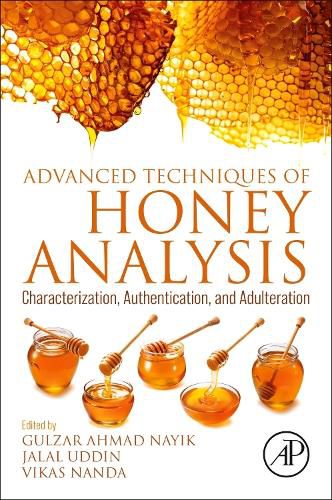Readings Newsletter
Become a Readings Member to make your shopping experience even easier.
Sign in or sign up for free!
You’re not far away from qualifying for FREE standard shipping within Australia
You’ve qualified for FREE standard shipping within Australia
The cart is loading…






Advanced Techniques of Honey Analysis: Characterization, Authentication, and Adulteration presents an overview of honey, including its classification, composition, safety, present status, quality issues, and prospects before delving into honey adulteration and presenting various methodologies for honey analysis. Broken into fourteen chapters, this book explores the physiochemical, bioactive compound, aroma, microbial, thermal, and rheological analysis and properties of honey. It also considers infrared spectroscopy, nuclear magnetic resonance, and Raman spectroscopy methods. High-performance liquid chromatography, gas chromatography and GC-MS methods are also highlighted.
Written for food scientists and those working in honey industries and related fields, this book will be a welcomed resource for all who wish to play a role in mitigating honey fraud.
$9.00 standard shipping within Australia
FREE standard shipping within Australia for orders over $100.00
Express & International shipping calculated at checkout
Advanced Techniques of Honey Analysis: Characterization, Authentication, and Adulteration presents an overview of honey, including its classification, composition, safety, present status, quality issues, and prospects before delving into honey adulteration and presenting various methodologies for honey analysis. Broken into fourteen chapters, this book explores the physiochemical, bioactive compound, aroma, microbial, thermal, and rheological analysis and properties of honey. It also considers infrared spectroscopy, nuclear magnetic resonance, and Raman spectroscopy methods. High-performance liquid chromatography, gas chromatography and GC-MS methods are also highlighted.
Written for food scientists and those working in honey industries and related fields, this book will be a welcomed resource for all who wish to play a role in mitigating honey fraud.